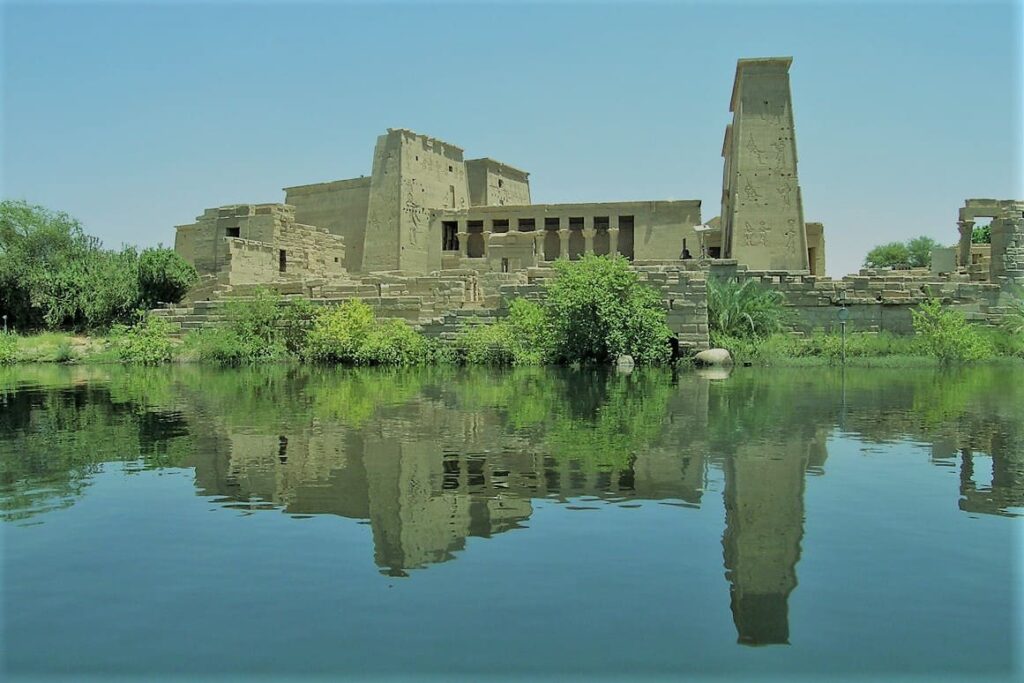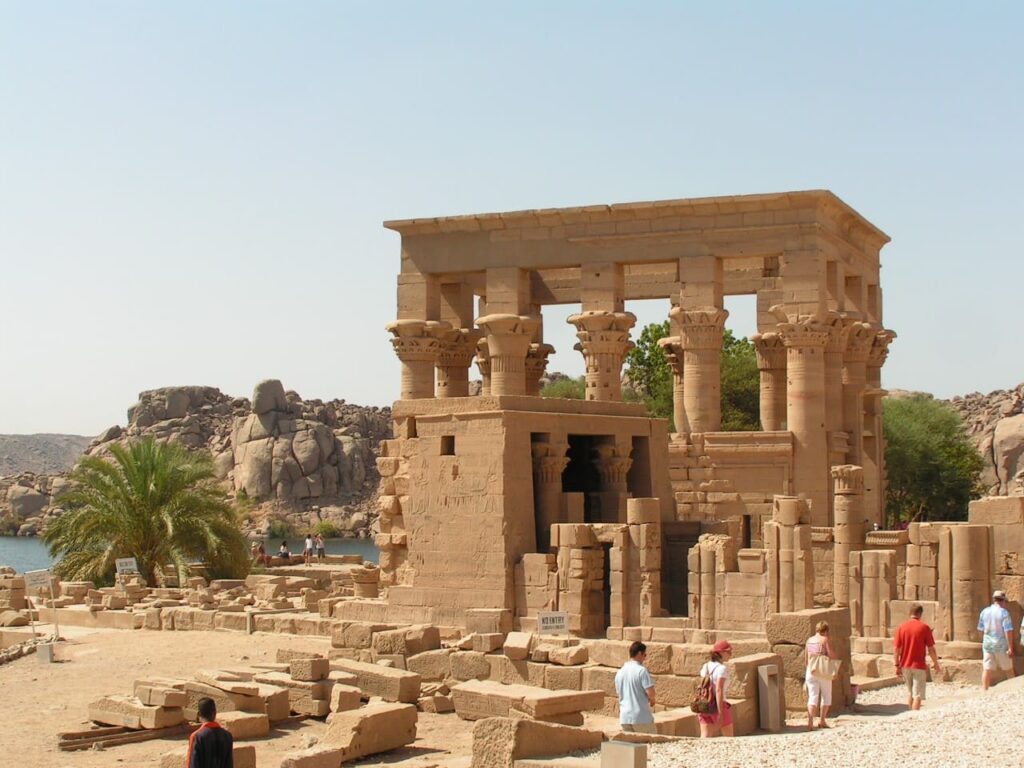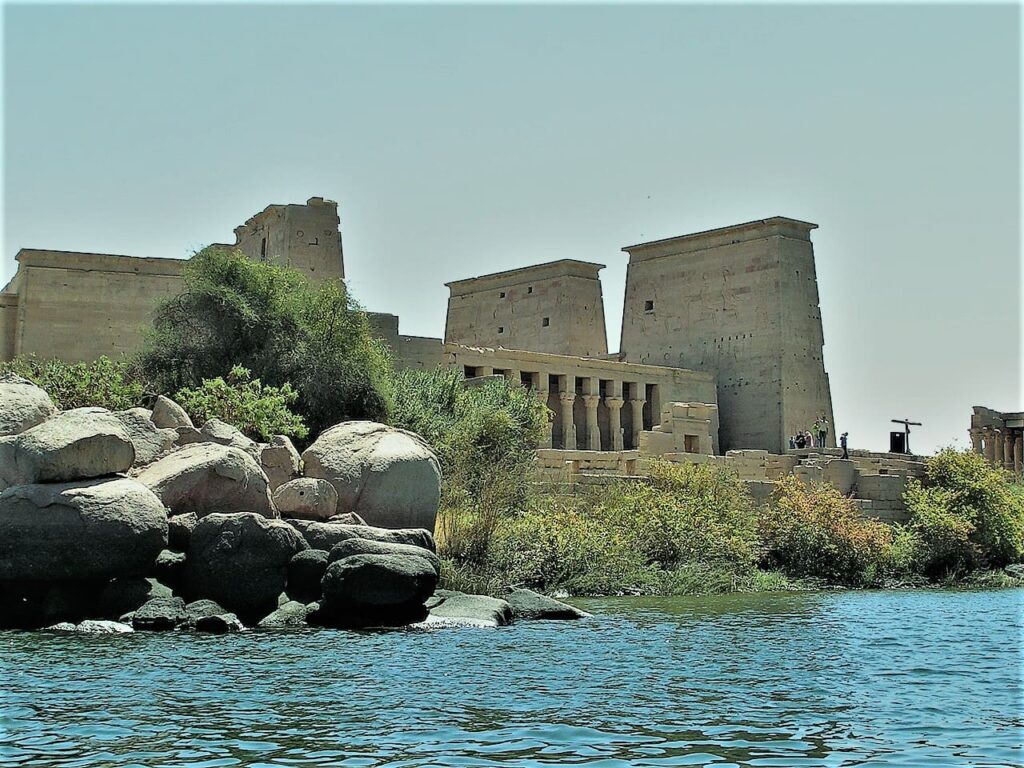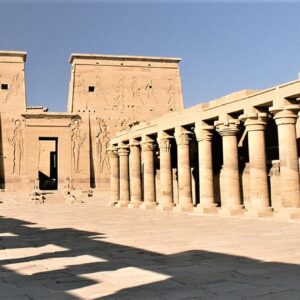
About
One of the most powerful forts along Egypt’s southern border is Philae Island, an island in the middle of the Nile that divides the river into two opposing channels at Aswan. After the High Dam was built, it was assembled on Agilika Island and transported from its original location on Philae Island where the Philae Temple was located. The Greek name Philae or Felai, meaning ‘the beloved’ or ‘beloved’, is an inherited name (the granules). Its Arabic name, Anas Al-Wujud, refers to the legend of Anas contained in the tales of the Arabian Nights. The term in ancient Egyptian and Coptic is bilak or bilakh, meaning the limit or the conclusion, so it was the last limit of
To the south lies Egypt. Although the island had temples to Amenhotep, Hathor and other gods in addition to the goddess Isis, the cult group was dedicated to the worship of Isis.
Philae Island through the centuries
The worship of the goddess Isis originally took place in the temples of Philae. And over the years, elephants held a special place in cults, to the point that a large group of devotees came together to retell the legend of Osiris’ death. and resurrection. The Great Temple and the Temples of Amenhotep and Arsenovis were built in the 3rd century BC. built. C. As for the Hathor Temple, Euergetes II finished the construction before 116 BC. the temple, Philae, was decorated with additional Ptolemaic inscriptions.
The cult of Isis originated in Egypt and later spread to Greece, Rome and other parts of the empire. Even during the time when Rome ruled Egypt, the authorities made efforts to decorate the holy island. In the 9th century B.C. the emperor Augustus Caesar built a temple near the northernmost point of Philae. Tiberius and others erected structures and inscriptions, and Claudius, Trajan, Hadrian, and Diocletian erected new structures on the island; Work on these projects continued into the fourth century AD. C. The proclamation of Theodosius I, written in 391 d. C. and which established the Christian religion throughout the Roman Empire was ignored due to the deep roots that the cult of Isis had on the island of Philae for many decades in
.
The island of Philae saw the arrival of Christianity in AD 550, during the reign of Justinian, and a new chapter in its history began. A new Christian colony was founded on the island of Philae, and the portico was adapted to the new religion. In order to build Christian churches on the island, some of the stones were moved from the ruins. The Temple of Isis was surrounded by a new village. The subject of one of the tales of the Arabian Nights
Philae Temple
This temple dedicated to Isis was demolished and rebuilt after being inundated by the waters of the Nile on a new site on the island of Egilika, some 500 meters from its original site on the island of Philae. It is a temple to Hathor . Visitors have the nightly light and sound display, spoken in multiple languages, at their disposal. One of the most famous structures in Egypt during the Roman period is the so-called Pharaoh’s Bed, also known as Trajan’s Tabernacle, built by Trajan, the Roman Emperor, on the island of Philae. Egypt was a prosperous region of the Roman Empire, it became extremely prosperous and several new cities were built in it.
You Can View Our Philae Tours NowTemples On The Philae Island
Many temples were built on the island of Philae, the oldest of which may be dedicated to King Thutmose III. (1490-1436 BC). After the construction of a huge temple by the kings «Night Nepf» (378-341 BC) and «Ptolemy Philadelphos» (3rd century BC), several Ptolemaic monarchs and Roman emperors followed him and the island of Philae became eventually overrun by temples. The most famous of these is known as «Pharaoh’s Crypt».
Elephant Island is also home to many statues of ancient Egyptian monarchs. The first ruins were discovered on the island of Philae (25th dynasty) under King Taharqa. Among the collection of large and small temples on Philae Island, the Temple of Isis is one of the largest and most important structures. The island area is roughly occupied by this temple. The Temple of Imhotep, the Greco-Roman Temple of Aresnovis, two rows of Roman columns and the Temples of Mandolis (from Roman times) and from the 20th Dynasty (from Ptolemaic times).
Egilica Island
The various temples of the sunken island of Philae have been moved to the island of Egilika, which is 500 meters from the location of the island of Philae, to make it look like the island of Philae
Protecting the Isis Temple on Philae Island
Ever since the construction of the first Aswan High Dam was completed in 1902, Philae Island has been surrounded by the Nile for most of the year. The island is home to numerous temples, chapels, columns and pharaonic gates depicting the Romans. -Greek and Pharaonic architectural styles. In the first half of the IV century BC. C. Nectanebo, one of the last original kings of Egypt, had built a temple on the island of Philae. The Ptolemies, who controlled Egypt for 300 years and accepted the cult of Isis, followed suit and added their own temples to the island. Because the island is placed between the new dam and the old dam, most of it will be submerged, but by the year
the construction of the high dam was complete. radically changed the situation.
In addition, the daily withdrawal of water to drive the turbines that generate electricity can mean the presence of continuous waves within about 3 meters of the water level, which in turn leads to rapid damage to the stones and then failure to locate them A solution to this problem would have caused this floating island to be disturbed for a long time. The souls of tourists disappeared from the map. When the issue of Elephantine Island was raised as a matter of urgency, the response to the Nuba campaign was swift and reflected the determination of the international community to save an area of such beauty and historical importance. So the question was not so much whether or not to save
elephants, but how to save them. However, after examining the results of this project and in particular the impact of artesian water on antiquities and the high cost that the project requires, the experts also proposed another project submitted by the Egyptian government.
This project aims to bring the antiquities to the island of Egilica. The first 3000 steel plate was installed by pilot boats in 1972 as part of the elephant rescue effort to create a makeshift dam to keep water out of the island. It took two years to build a 12 meter long fence with two rows of interlocking piles around the island. The quarries of the waterfall, 5 km away, were filled with a solution of clean water and sand. Pipes connected this combination to the one on the other side of the lake.
The sand was able to hold the steel against the pressure of the lake while allowing the water to seep through. This ended the lifeline around the island.











